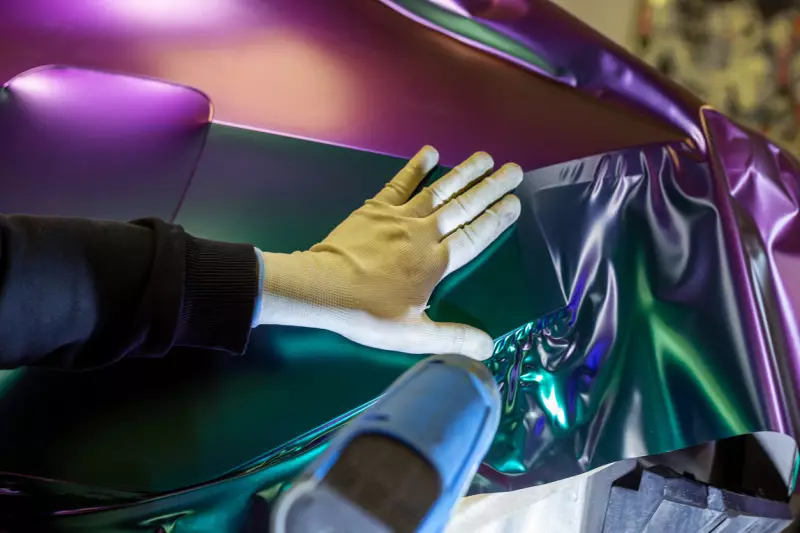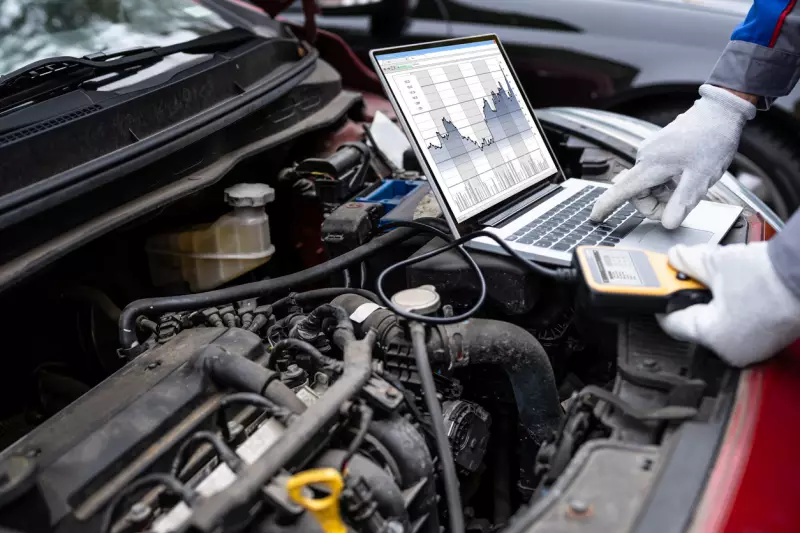Car modifications have long been a way for automotive enthusiasts to set themselves apart from the stock-locked crowd. The process allows owners to tailor their vehicles to their unique tastes and preferences.
From subtle aesthetic changes to performance enhancements that tear away various parts of the vehicle's body, modified cars are a testament to creativity and passion. However, diving into this world is a rush accompanied by several expenses and legal considerations.
We'll cover multiple aspects of car modifications so you jump fully prepared for the joys and challenges.
What Is a Modified Car?
A modified car is any vehicle that has undergone purposeful changes from its factory specifications.
These alterations fall into two categories: cosmetic and performance. The former focuses on altering the vehicle's appearance, while the latter tunes components for function.
There's an enormous diversity in modifications, reflecting the audience and array of interests held among car enthusiasts. Some modifications push the vehicle to its absolute limits, while others focus on changes that boost performance on specific terrain.
By converting vehicles to match personal preferences, modifications become something of an art form. Vehicles are an extension of the owner's identity, whether the changes bring an ideal to life or pay homage to a lost model line.
Types of Car Modifications
All modifications fall between cosmetic and performance, but interested owners have a library of options to transform their vehicles. It's not about rigidly adhering to one method but using every available tool to create exactly what they want.
Some enjoy tackling the process independently while reverse engineering their vehicle. Others want a little assistance throughout the journey.
Cosmetic Modifications

Cosmetic modifications enhance the appearance of the vehicle and include interior and exterior adjustments. With a few exceptions, these changes serve little functional purpose and are more about creating a new aesthetic.
Paint Jobs
Custom exteriors apply unique colors, designs, or finishes to the vehicle's surface. Unlike acrylic or oil paints, specialized paints are designed to endure weather and heat and stick to automotive parts.
Vinyl Wraps
When considering updating your vehicle's exterior, choosing between painting or a vinyl wrap is crucial, especially if a paint job is deemed too costly or lengthy. Vinyl wraps are a great alternative to transform an exterior. Wraps are also less permanent and suit people who frequently swap aesthetics. The downside is that this method is difficult, sometimes impossible, to get a specific finish with.
Aftermarket Wheels
"Aftermarket" refers to replacement parts not created by the original manufacturer. Aftermarket wheels provide more style, finish, and size options than stock wheels. Specific wheels can also improve MPG due to lower weight and improve dynamic driving performance.
When considering non-stock wheels, the most critical factor is the fit. The wrong offset will shrink or enlarge the wheel within the fenders, unbalancing the aesthetic. You may also get a wheel that interferes with the vehicle's turning.
Body Kits
Body kits are aftermarket exterior components used to modify a vehicle. Rather than changing the existing parts, body kits provide add-ons like bumpers, side skirts, and spoilers. These extra pieces significantly alter the proportions of your vehicle and may improve safety and performance.
Most kits are intended for specific vehicle models due to differences in construction. However, a few "universal body kits" apply to more than one model. Read product details carefully; even universal kits will not work with everything.
Window Tinting
Window tints apply a thin film to the vehicle's windows to darken them and reduce the amount of light entering the cabin. Most enthusiasts are after the sleek and stylish appearance that tinted windows deliver. However, the tint also has a functional purpose. It prevents nosy people from peeking inside while the vehicle rests.
When looking out from the inside, tinted windows discolor your surroundings and reduce visibility. They also make it harder for law enforcement to assess a situation since they can't see what you're doing or how many passengers are inside. Brief yourself on local regulations before making this modification.
Performance Modifications

Performance modifications improve vehicle functions by replacing or adding new parts. These upgrades focus on metrics like speed, acceleration, and maneuvering.
Engine Tuning
Engine tuning optimizes the engine to extract more power and torque. The engine is a complicated machine with many parts contributing to overall performance, so there are just as many ways to alter it.
Commonly used methods include engine control unit (ECU) remapping or adding performance chips to modify parameters like engine fuel supply. Engine tuning improves horsepower, enhanced throttle response, and overall durability.
Turbocharger and Supercharger Upgrades
Typically, air enters the engine as the pistons move up and down to make space. Turbochargers and superchargers hasten this process by compressing air and forcing it into the engine. This upgrade allows the engine to burn more gasoline and increase power.
Superchargers are mechanically powered through a belt-driven compressor. The belt is rotated from the engine's innate movement to turn rotors that push outside air into the system more quickly.
Turbochargers utilize the heat from exhaust gasses to spin a turbine. This turbine powers the compressor, which takes air and moves it through a gradually narrowing tube. The reduced tube diameter compresses the air before reaching the engine.
Suspension Upgrades
Suspension upgrades aim to enhance the vehicle's handling characteristics and overall ride quality. This can include upgrading to performance shocks and struts, lowering springs for improved cornering and stability, and installing sway bars or strut braces to reduce body roll. Suspension upgrades can significantly improve the vehicle's agility, responsiveness, and driving dynamics.
Exhaust System Upgrades
Upgrading the exhaust system can improve engine performance by reducing back pressure and increasing airflow. However, it's not as easy as performing a muffler delete to increase airflow and combust more gasoline.
Removing the muffler would lead to significant increases in noise that conflict with many state's acceptable decibel levels. Exhaust manifolds are a great middle-ground that attach to the engine block and direct exhaust gasses from the engine's cylinder heads into the catalytic converter.
The same result can be accomplished with an exhaust header. Headers create less resistance when redirecting exhaust gasses, but this difference is only important in high-powered vehicles similar to race cars. They are also thinner and aren't built with a heat shield, making headers the more dangerous option.
Brake Upgrades
Stock brakes pass rigorous safety tests, but they're not designed for more enthusiastic driving. They're also more likely to wear out at different intervals than other systems like brake rotors. This gap leads to more repair shop visits than most people like.
Standard brake upgrades include swapping solid rotors with slotted ones or replacing rubber brake lines with stainless steel equivalents. In general, brake upgrades focus on braking distance and durability.
How To Modify A Car?
The consequences of a botched upgrade are not only costly but may be irreversible or illegal. Owners must approach car modifications with careful planning, research, and consideration.
Initial Planning
Before jumping into a project, you should set clear goals and expectations. Imagining the end result will help you make decisions throughout the process and should always be the first step for changes, big or small.
- Define Your Goals: Determine what you want to achieve and what kinds of modifications will get you there. Are you looking to enhance a performance aspect or plaster your favorite team's logo to the exterior?
- Set a Budget: Establish a realistic budget for modifications, including the cost of parts and labor. Price everything to prevent overspending. Also, consider that you may lose access to the vehicle for a prolonged period and budget any costs that inconvenience may bring.
- Warranty Implications: Modifying your car will probably void the car warranty, especially if you alter safety components. Professional installations may come with warranty coverage to replace your previous safety net.
Choosing the Right Parts
Selecting high-quality parts and professional services is essential for reliable and safe upgrades. The body mod industry is enormous, and there's a lot of competition. This means there are a lot of cheap, unsafe products out there, too.
- Invest in Quality: Reputable brands are recommended for a reason. They produce high-quality aftermarket parts that have proven longevity. You can research customer reviews and look up performance tests, but nothing beats hearing firsthand experiences from people who've used the part.
- OEM vs. Aftermarket Parts: Decide whether you want to use the original equipment manufacturer (OEM) or aftermarket parts. OEM parts are designed for your vehicle and won't interfere with stock systems, but you pay a premium for these benefits. You also lose a degree of freedom with OEMs since you're restricted to what the company offers.
DIY or Professional Installation
One of the most critical decisions in car modification is whether to tackle the project yourself or leave it to a professional. This step is crucial to your vehicle's safety and requires an objective review of your skill set.
Next, consider whether you can access the tools and equipment necessary to complete the modification. All the knowledge in the world doesn't amount to much if you're missing that brake lathe or a car pit.
How Much Does It Cost to Modify a Car?
The cost of modifying a car varies widely depending on the type and extent of the modifications. Entry-level modifications may be relatively affordable, while high-end custom work involves significant expenses.
Factors including brand reputation, labor, and tools influence the final tally. Owners should also consider the opportunity cost of losing access to their vehicle for multiple days. A firm budget will reflect all possibilities.
Is It Illegal To Modify Your Car?
Familiarize yourself with local and federal regulations regarding car modifications. For example, some states ban tinted windows outright, and others only allow a light shade. There are similar restrictions to alterations that affect vehicle emissions and decibel levels.
It's also prudent to review laws in other states you frequently visit. You don't want to get stopped on your way home for the holidays. Even if something is legal in your registered area, you can still get a ticket if it's illegal in another state.
Conclusion
Car modifications give enthusiasts a chance to stray from manufacturer requirements and personalize vehicles according to their preferences. Approaching modifications thoughtfully and responsibly means considering the process's legality, safety, and financial sides.
We don't need to tell you that cars are an expensive asset. A dream modification could easily lead to a damaged engine, squeaky brakes, or an unexpected ticket. Stay mindful about the changes you've made and how they affect your driving and those around you.
Otherwise, feel free to express yourself through your car and unlock its endless possibilities on the road.








![Best Sites to Check a Car’s History [2025 Review]](https://media.infopay.net/thumbnails/K8lMeG2QLjE46LPqZlmoi6SunKKdT5qvlaRZk6e1.webp)










![Best Sites to Check a Car’s History [2025 Review]](https://media.infopay.net/thumbnails/K8lMeG2QLjE46LPqZlmoi6SunKKdT5qvlaRZk6e1-w356.webp)
